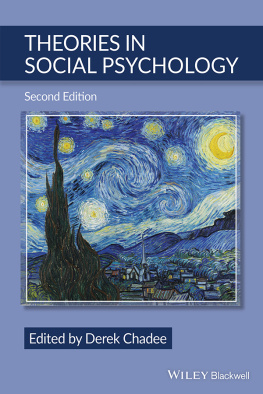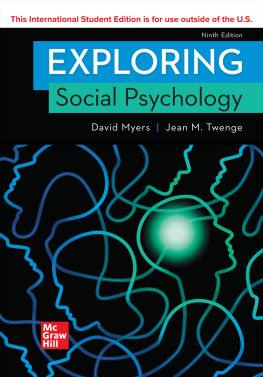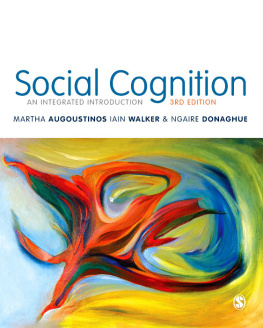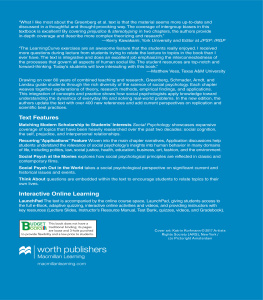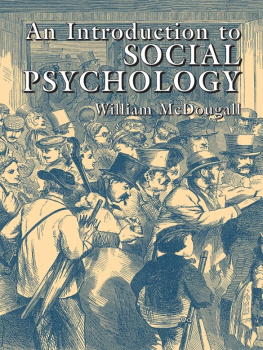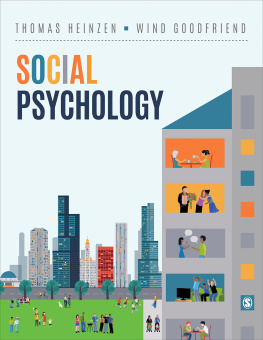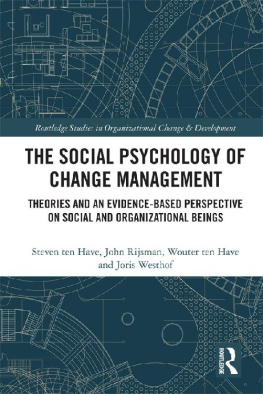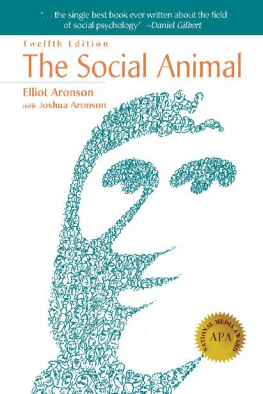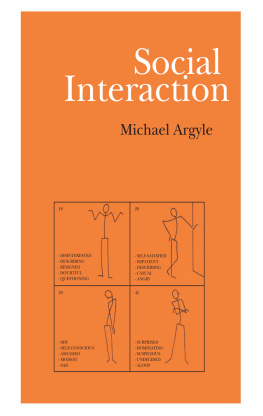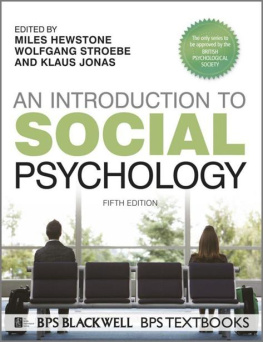EDITION
SOCIAL
PSYCHOLOGY
To Anselm Strauss
(1916-1996)
EDITION
SOCIAL
PSYCHOLOGY
ALFRED R. LINDESMITH
ANSELM L. STRAUSS
NORMAN K. DENZIN
Copyright 1999 by Sage Publications, Inc.
All rights reserved. No part of this book may be reproduced or utilized in any form or by any means, electronic or mechanical, including photocopying, recording, or by any information storage and retrieval system, without permission in writing from the publisher.
For information:
| SAGE Publications, Inc.
2455 Teller Road
Thousand Oaks, California 91320
E-mail: |
SAGE Publications Ltd
1 Olivers Yard
55 City Road
London EC1Y ISP |
SAGE Publications India Pvt Ltd
B-42, Panchsheel Enclave
Post Box 4109
New Delhi 110 017 |
Printed in the United States of America
Library of Congress Cataloging-in-Publication Data
Lindesmith, Alfred Ray, 1905
Social psychology / by Alfred R. Lindesmith, Anselm L. Strauss, and Norman K. Denzin. 8th ed.
p. cm.
Includes bibliographical references.
ISBN 0-7619-0745-9 (cloth: alk. paper)
ISBN 0-7619-0746-7 (pbk.: alk. paper)
1. Social psychology. I. Strauss, Anselm L. II. Denzin, Norman K. III. Title.
HM251.L477 1999
302dc21 98-48146
This book is printed on acid-free paper.
04 10 9 8 7 6 5 4
| Acquiring Editor: | Peter Labella |
| Editorial Assistant: | Rene Piernot |
| Production Editor: | Astrid Virding |
| Editorial Assistant: | Nevair Kabakian |
| Designer/Typesetter: | Janelle LeMaster |
| Cover Designer: | Candice Harman |
Contents
PART I
THE SOCIAL PSYCHOLOGICAL IMAGINATION
PART II
SOCIAL STRUCTURE AND LANGUAGE
PART III
CHILDHOOD SOCIALIZATION
PART IV
SELVES AND SOCIETIES
Preface
T his eighth edition of Social Psychology significantly updates the previous edition. Virtually a third of the text is new. expands our earlier treatment of gender performances, and also presents discussion of recent extensions and criticisms of G. H. Meads theory of the self and the generalized other.
The greatest number of revisions and changes are found in we give special attention to the technologies of power that are contained within the medical establishment. We examine the medical body and chronic illness, and offer criticisms of the risk society and the central place of the medicalization process in these social structures.
Like the previous edition, this edition is written in the spirit of C. W. Millss The Sociological Imagination. We ask how a sociological imagination, sensitive to power, gender, language, subjective experience, the media, and the circuits of culture, can speak to our collective lives in the last years of the 20th century. We hope that this revision continues to convey the excitement and fulfillment that comes from the application of symbolic interactionism to the study of human group life. We regard this perspective as the most sociological of all social psychologies. When placed within an interpretive cultural framework, symbolic interactionism offers the social sciences the most sensible theory of mind, self, and reflexive conduct.
It is our hope that interested readers will be motivated to read more deeply in this perspective and to perhaps examine the journals Symbolic Interaction and Studies in Symbolic Interaction, which present the latest research and theoretical work in this tradition.
The first edition of this book was published in 1949. With this edition, Social Psychology becomes the oldest social psychology text in the United States. It is an honor to be with Sage Publications for this edition. At Sage we thank Peter Labella, who graciously took this project on and has provided continuous support throughout every stage in the process. At Sage we also thank Astrid Virding and Judy Selhorst for their patience, consideration, and assistance. We also thank Sylvia Allegretto, Shawn Miklaucic, Jack Bratich, and Michael Elavsky for their excellent assistance in preparing this revision, including indexing and proofreading.
It is with great regret that I record the death of Anselm Strauss on September 5, 1996. This book is dedicated to the memory of Lindy and Anselm. They started it all, and somewhere in the mid-1970s they allowed me to become a part of it. I thank them.
Norman K. Denzin
PART I
THE SOCIAL PSYCHOLOGICAL IMAGINATION
The Field of Social Psychology
T he chapters in offer an overview of our conception of the field of social psychology. In this chapter we have two major goals. The first is to define and locate the field of social psychology within the human disciplines. The second is to make a statement concerning our position as social psychologists. We call our point of view critical symbolic interactionism and connect it to cultural studies and pragmatic, feminist social philosophy (see Denzin, 1992, 1997; Seigfried, 1996; Strauss, 1993; West, 1989).
A Definition of the Field
Social psychology is an interdisciplinary field located midway between sociology and psychology. It also occupies central places on the borderlines that separate anthropology, history, and literature (Benson, 1993). Sociologists study the economic, political, and cultural processes that shape social structure and contemporary cultural life (Fine, House, & Cook, 1995, p. xi; Hall, 1996a, p. 9). Psychologists study the processes of mental life: memory, perception, reasoning, cognition, and emotion.


